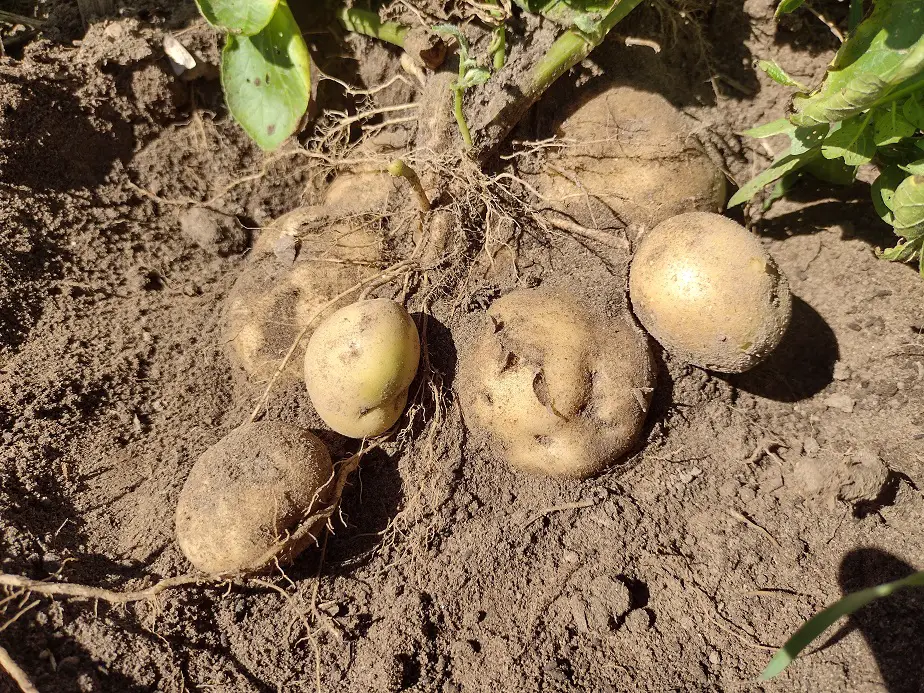Digging your potatoes at the right time gives you big potatoes with little to no loss. It’s good to have an idea of when to harvest potatoes and the variables that alter the harvest time.
In Michigan, potatoes are usually harvested from late July through August. Early-planted or fall-planted potatoes are usually harvested in harvested June or early July. Potatoes for fresh eating can be dug early, as soon as the blossoms fall off, but potatoes left to full maturity will be larger and store better.
There are five variables that can affect harvest time by a month or more. And, some varieties mature much later than others. Here’s what you need to know.
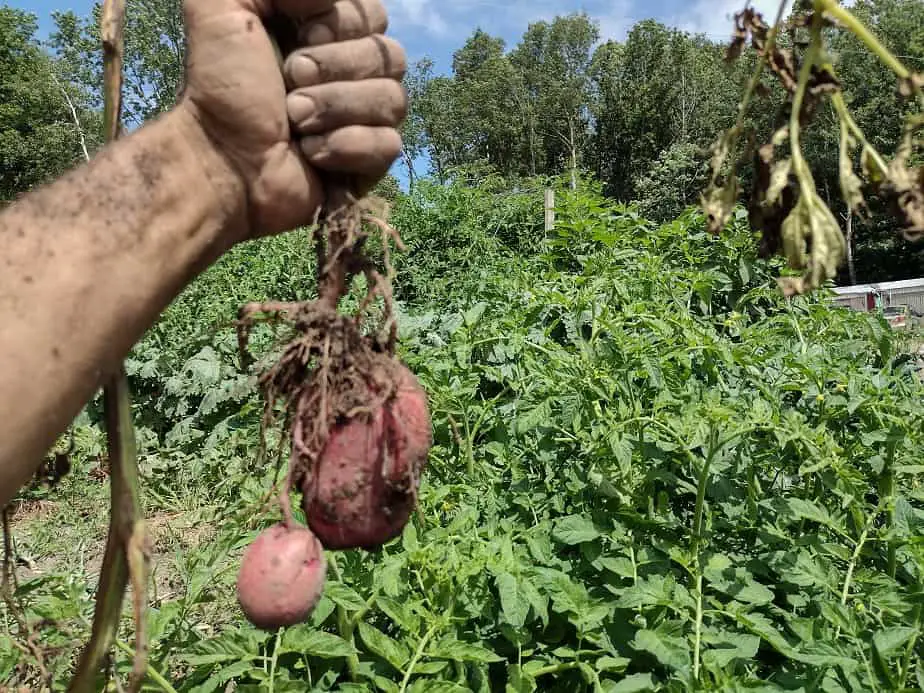
When do Potatoes Mature?
Potatoes fully mature right as the plant begins to die off, usually 90-120 days after spring planting. Smaller varieties, like Irish Cobbler, mature earlier, after 80-90 days. Large storage varieties, like russets, usually take 110 or more days to mature in good weather. Potatoes are often harvested a little early.
Potato Days to Maturity by Variety (approximate)
| Variety | Days to full maturity | Harvest goal | Description |
| German Butterball | 120 | 6 pounds per plant | Large, creamy, yellow flesh |
| *Kennebec | 110 | 6 pounds per plant | large, white round. Smooth, firm-fleshed. |
| *Pinto Gold | 110 | 6 pounds per plant | Medium, white/red patchy. Creamy |
| Russet | 100 | 6 pounds per plant | Large-medium, brown. Firm flesh |
| Red Pontiac | 100 | 6 pounds per plant | Medium-large red, round firm flesh. |
| *Yukon Gold | 90 | 5 pounds per plant | Medium, round, yellow. Very creamy |
| *Red Norland | 90 | 5 pounds per plant | Medium to large, red with thin skin. |
| *Adirondack Blue | 90 | 4-1/2 pounds per plant | Medium, oblong, very firm. Highest yielding blue variety. |
| *Irish Cobbler | 80 | 4 pounds per plant | Medium-small, white. Exceptional flavor. |
This is not a comprehensive list, but it includes the popular varieties that both do well in Michigan, and tend to yield very well. It’s important to realize first off that the date to maturity is usually plus or minus 2 weeks in any given year. Simple changes in weather make a big difference.
Potato plants mature from environmental stress. Like many plants, stress is what causes the physical changes leading to maturity, not actual growth time. Extra stress will induce maturity sooner. Sooner maturity means less growing time, which means smaller yields.
That’s not all bad, sometimes it’s good to clear out the garden a bit early. but, if you want a patch of potatoes to produce the maximum amount of food, you’re going to want it to grow as long as possible. Probably the biggest limiting factor of growth time is water for both yield and maturity date.
Drought conditions will cause potatoes to mature early, grow small, and have a poor yield. Without water, the plants can’t take in the needed minerals needed to continue growth. They basically are forced to stop growing and to mature.
Potatoes need ample water in the ground or they won’t give you a decent harvest. Too little of too much and they won’t be happy. I wrote an article about watering potatoes. Here’s a link to it.
Fertility is the second biggest factor. A potato patch that doesn’t have enough fertility will be forced to set into maturity early. If the plant doesn’t get enough to eat, it will eventually stop growing prematurely and call it quits.
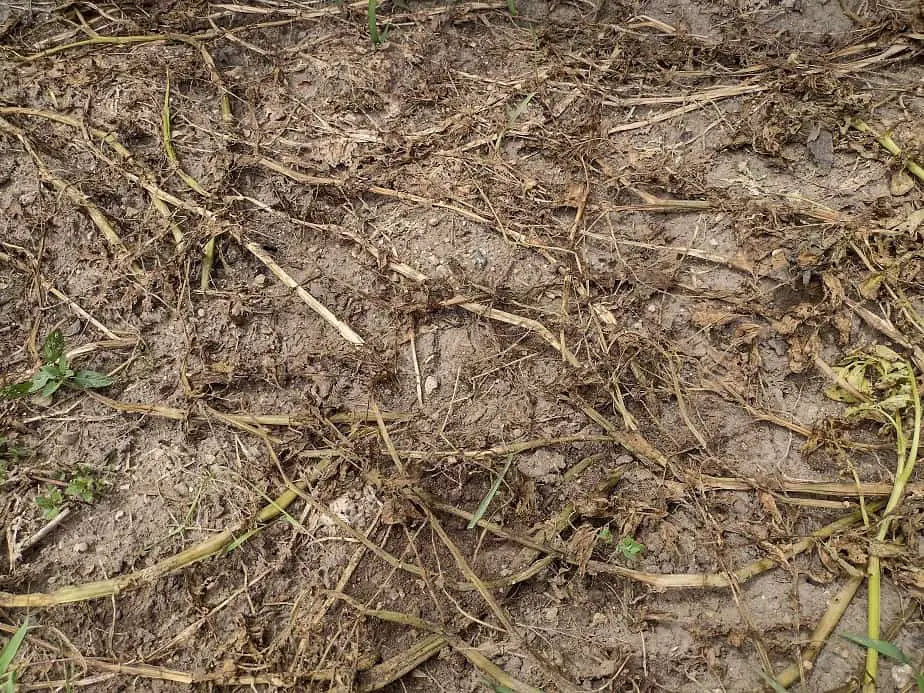
Heat is the natural enemy of potatoes. Excess heat will stunt the plant, causing early vine die-off. Many gardeners experience this die-off during a summer heat wave. That’s why potatoes grow better in cool areas like Michigan. That’s why it’s important to space plants fairly close.
Potatoes are usually planted with a spacing that gets pretty crowded. In the latter season, you can’t really walk through a properly plated potato patch. it should look solid, with no pathways. The point is to keep the sun off the soil. The soil should be completely shaded by July.
Direct sunlight will heat the soil and hurt the roots. The foliage can take it but not the roots. If The roots get hot, the plant stresses out, forces maturity, and dies off early.
Pests like potato bugs, blister beetles, and hornworms can put a lot of stress on plants. They eat the leaves very quickly, causing less photosynthesis, and forcing the plant to divert energy from growing to re-build the damaged tissue. They also reduce the foliage cover, letting more sun through.
I had a patch of red potatoes that was invaded by blister beetles. They ate most of the foliage within a week. It was the hottest week of July. One week later, the vines all went brown and limp, and the rest of the leaves were brown and dry.
The stress of the bugs, plus the direct sunlight on the soil forced maturity a few weeks early. I got a fair harvest but would have expected 25% more if they had gone full-term. Growing potatoes is all about feeding them and reducing stress. Actually, that’s most of what all gardening is.
Excessive rain, while it won’t force maturity, may cause you to have to dig up your potatoes early. if you experience an end-of-summer rainy period and the soil remains waterlogged for more than a few days, you might need to harvest your potatoes early.
Potatoes like damp soil, but will eventually rot in soggy soil. This is one common dangers of planting in summer for a fall harvest, or in fall for a spring harvest. In Michigan, we get a lot of rain in September. Particularly in west Michigan. All that lake effect precipitation, while usually beneficial, is problematic sometimes.
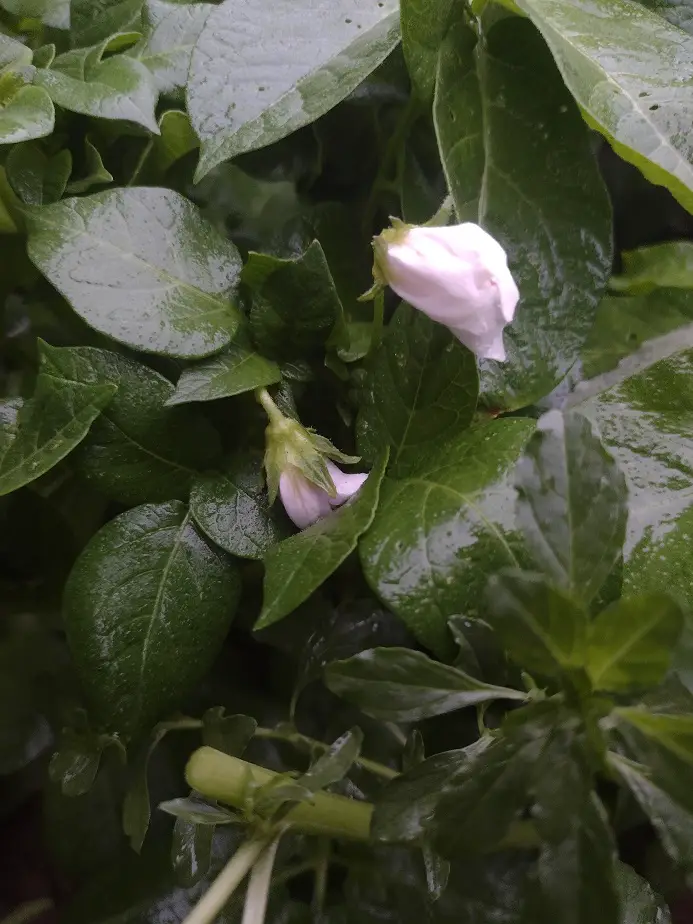
How long After Potatoes Flower Are They Ready?
Most potatoes are close to maturity a month after the flowering stage is complete. It varies depending on weather and on the specific variety grown. Young potatoes are harvested as soon as the flowering is complete. For good storage potatoes, wait until the vines are completely dead and brown.
Once the vines start to wilt and lay flat on the ground, the potatoes will probably be mature in 1-2 weeks. After the plant has started to die off and go brown, the spuds are fully grown, but can still benefit from a few more weeks in the soil.
After the plants stop feeding into the spuds, the potatoes separate from the roots, form a thicker skin, and begin to self-cure. Letting the skin thicken helps you to harvest and store them without damage. Don’t feel bad if yours don’t look as uniform as store-bought spuds.
Commercial growers sort or cull potatoes based on size and shape. Usually, 1/3 to 1/2 of harvested potatoes don’t end up in bags at the grocery store. The culls are used for processed potato foods, potato starch, and as livestock feed ingredients.
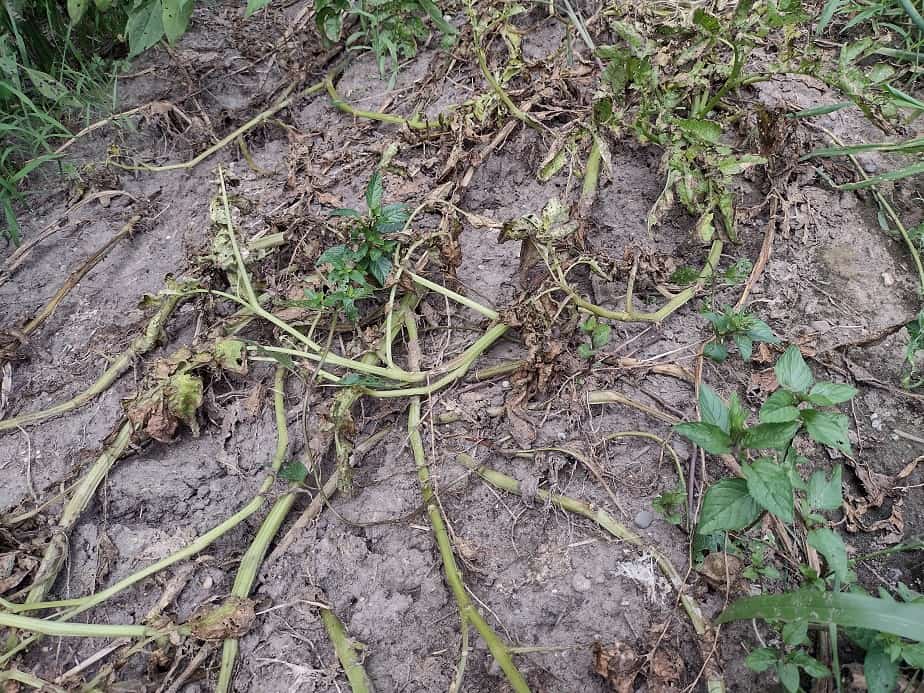
How Long Can You Leave Potatoes in the Ground?
Potatoes can be left in the ground until the first deep freeze, usually in November. If potatoes freeze, they are wrecked. But, if protected from freezing, potatoes can remain longer, and even overwinter in the soil. If you leave potatoes in the soil more than 2 weeks, mark the rows so you can find them later.
If all your potato plants die off at once, you don’t have to dig them all on the same day. You can usually spread out the harvest over a month or more if you need to, as long as it doesn’t get too rainy. I prefer to just plant several varieties with different maturing dates, and dig them as they mature.
There’s an awesome reference guide for growing potatoes by Michigan State University. Here’s a link to it. I recommend you print it out and keep it on hand for future reference.
Related Articles:

